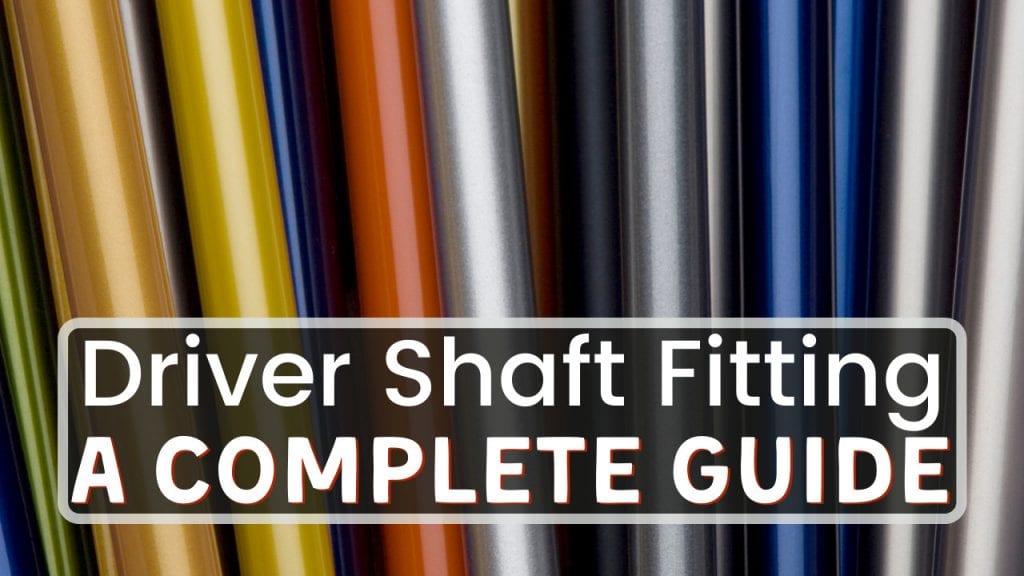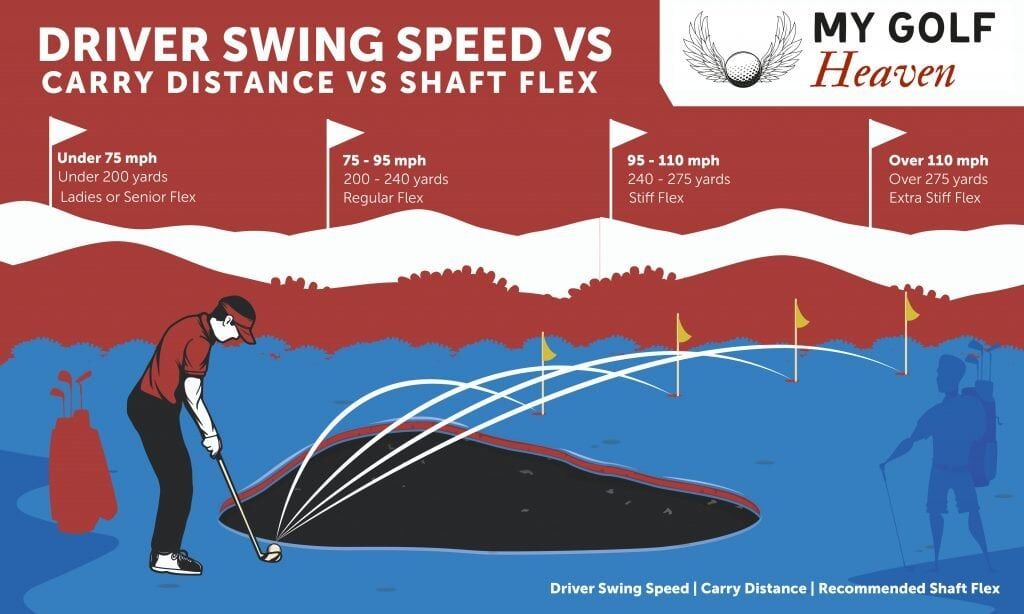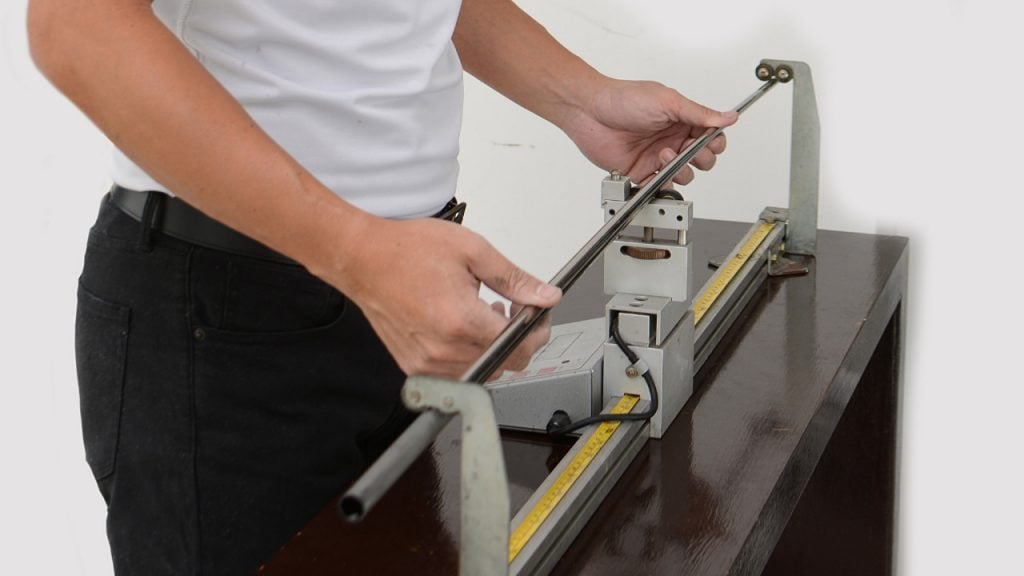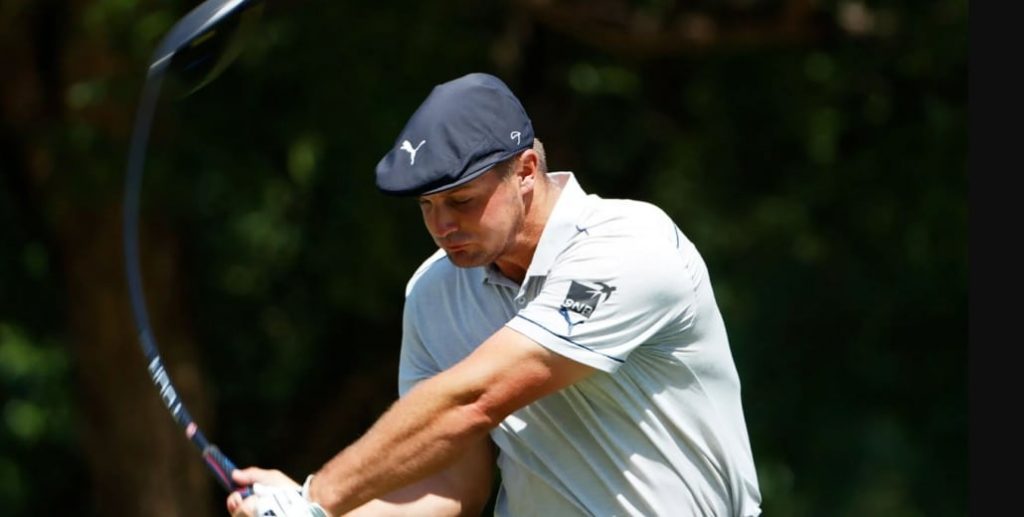Soft and Easy to Insert My Shaft

Wow, you must really love the game of golf if you're clicking on an article devoted entirely to driver shafts.
Well, you're not alone. The good news is your devotion and willingness to learn will gain you those extra yards of distance and keep your ball flying straight.
Getting the best shaft by doing a driver shaft fitting is a very subjective task but also very beneficial.
In a perfect world, all of our woods and irons would be fitted by a professional to suit our swings perfectly. But that isn't the case.
If there is one club to be properly fitted, it would definitely be the driver.
This is the club with the most margin for error; it's the longest in the bag and, therefore, the toughest to hit. By optimizing every aspect of this club, you will turn it into a weapon and keep it from being a liability.
Here are the different components of a driver shaft. After this, you will have a good discussion with your club fitter about different shafts and feel confident in choosing the right shaft.
Flex/Frequency
The most common measurement we find on a shaft is its flex. There are five different flexes;
- A-Flex (formerly known as senior flex)
- Ladies
- Regular
- Stiff
- X-Stiff
In a perfect world, each of these flexes would correspond to a specific frequency number. That way, we can compare apples to apples when trying out drivers from different manufacturers.
However, it's not that simple.
Each company has its own opinion of what frequency a "regular" flex shaft should flex at.
If your swing speed is around 90 mph, you are right on the line between a regular shaft and a stiff shaft. A club fitter will measure your swing and then match you up with an optimal shaft frequency number.
Then you just search for shafts that have that frequency number for the right fit, regardless of what label they have slapped on there.
This is one of the many huge advantages to getting fit properly by a non-bias club-fitter. If you go to the Titleist Fitting Center, they will NEVER recommend a Callaway to you, even though the numbers may suggest that would be the right fit.
Whichever club fitter you choose, you can request the results of your fitting. All your numbers and data are universal, so you can do the research yourself if you want.
The Effects Of Each Frequency
Your shaft flexibility has the most impact on the ball flight as it is connected to your distance AND direction.
Generally, if it's too flexible, it may cause your ball flight to balloon and go too high. But it can also cause a hook or a slice. This is because the extra flex creates more spin on the ball.
So whatever spin your clubface imparts on the ball at impact will be exaggerated. If you're fading the ball but getting good trajectory, then a stiffer shaft may be straighter as it will create less spin.
Here's a basic guideline;

Under 80 mph → Ladies or A-Flex
81 mph – 90 mph → Regular
91 mph – 100 mph → Stiff
101+ mph → X-Stiff
To keep it simple at first, use your own driver as a benchmark and try to identify how your shaft flexes. If you typically hit it high with minimal roll, then try a stiffer shaft.
If you are having trouble getting a higher launch angle on your ball and only hit line drives, then more flexibility may be the right shaft for you.
Length

The length of your driver shaft will help you control the direction of the ball more. A shorter shaft will give you better accuracy.
A longer shaft will give you more distance but will cost you some fairways in regulation. You will sense a theme in this article that the name of the game is to find balance, and that includes length.
There is a perfect length for you.
A shorter driver will also affect other variables as well such as flex, kick point, and swing weight. You may think cutting your driver length down an inch will give you more control over your swing, but if that makes your driver lighter, then you could start swinging faster and cause more mis-hits.
For every action, there is a reaction, and the help of a good club fitter is worth their weight in birdies.
With the advancement of driver head technology, shafts don't have to be as long as they are. A standard driver's length now is about 45 inches.
Most touring professionals use something shorter than that to hit more consistent drives without sacrificing a ton of distance. Tiger's driver is 43.5".
The legal limit listed with the USGA is 48", which might not sound like much difference, but even those small changes make it feel like a longer shaft.
Weight
The weight of your shaft is going to primarily affect your distance. A heavier shaft will reduce your clubhead speed and thus the amount of energy transferred into the ball.
But it's not as easy as just going out and getting a lighter shaft.
A shaft that is too light will cause you to swing out of control and lose consistency. You may lose feel too, which is very important when hitting the driver since it is the longest club in your bag.
Because you can swing faster means you can load the shaft more, and as we learned earlier, too much flex brings in a lot of undesirable shots.
Most commonly, if you see a pull or a hook, then consider switching to a heavier shaft. Your hooks may be a result of the face turning over too quickly based on your swing speed. A heavier shaft will smooth your transition through impact and keep the clubface more square for longer.
What Weight Is Best For You
Here is a starting point to give you an idea of what weights (in grams) you should be looking for. Your fitter will be able to help you get this dialed in.
Under 80 mph → Under 55 grams
81 mph – 90 mph → 60 – 66 grams
91 mph – 100 mpg → 66 – 71 grams
101+ mph → 71+ grams
Again, these are just guidelines, however. When you are getting a driver shaft fitting, there are so many variables that committing to one right away will set you up for disaster. Let the numbers speak for themselves. All the factors must work together to get the right shaft for you and your swing.
Kickpoint

Now we are getting into some in-depth driver talk. This is a word you may not hear too often amongst your weekend foursome pals.
This refers to a spot or small range on the shaft where it experiences the most bend under duress or that of a golf swing.
I'm sure you noticed that the grip end is thicker than the clubhead end. This tapering is different with each shaft and will affect how it loads or whips or "kicks," if you will.
Just like the other categories, we want this to be optimized somewhere in the middle that suits your swing accordingly.
If the kick point on your shaft is too low, meaning closer to the clubhead, then your ball flight could have a launch angle that is too high.
On the other hand, if your kick point is too high and close to the grip, then your shots will come off with a low launch and may seem a bit dead.
A driver like that won't load properly and will feel like a stiffer shaft even though the shaft label indicates a 'regular' flex.
It's Called 'Bend Profile' now
When discussing kick point with your club fitter, you may hear them mention the term 'bend profile'. This is in reference to the kick point but with more science involved.
The bend profile takes into account how your entire shaft kicks. Not just the location of one spot. With today's technology, custom club makers can adjust the shaft at any place. There is no excuse to have the wrong shaft.
Some shafts are 'tip-stiff', meaning the tip section near the clubhead is stiffer in relation to the rest of the shaft. Or 'grip-stiff' which keeps the upper end of the shaft firm to help reduce spin.
Based on your measurements, your fitter will be able to identify the perfect overall bend profile for your swing. It can be simplified down to one of the following;
- Low Kickpoint
- Mid Kickpoint
- High Kickpoint
But behind the scenes, you know there is so much more being assessed than simply a spot on the shaft.
Torque
Torque refers to how much the shaft twists. It's the least talked about feature but still an important one to club fitters. High torque shafts can twist easily, and low torque shafts are resistant to twisting.
Not to sound like a broken record but generally, you want your torque to be not too high and not too low. Based on your swing speed, your club fitter can determine how much twisting you are incurring.
Typically a higher swing speed will require lower torquing shafts to hold up to the speed. It is very helpful for your miss-hits and for when you make a bad swing. If you're swinging badly at a high velocity then you need all the help you can get to keep the face as square to the ball as possible.
On the other hand, if your ball is coming off dead but still looks good then you may benefit from more twisting to try and compress the ball more.
This will give your drives the added pop and perfect trajectory they have been missing without changing your swing.
Cost
It always comes down to price at the end of the day and we are always looking for the best deal. A driver shaft can cost anywhere from $40 – $300.
Yes, one shaft without a head or grip on it can cost $300+. Not many people want to drop that much cash on half of a driver.
But that should be proof of how much science and technology goes into these so that we can all hit it a little further and a little straighter just by having the right shaft.
If you lack consistency as a golfer then there is no need for a super premium shaft. They are made to be durable as well and to withstand hours of practice on the range.
So if you are playing less than 50 rounds a year there should be no issue finding a great shaft for around $100.
Usually, if you purchase a shaft of that caliber then the driver fitting is free but double-check with your fitter first to make sure they are flexible on price.
If you only have a manufacturer near you for a fitting then you can just pay for a fitting and keep your data. The numbers you collect are universal and can be sent off to any club maker.
They will know without seeing you exactly what shaft to fit you with. Fittings like this cost about $100 as well, sometimes less.
Conclusion
Fitting yourself for a driver shaft is a bit like trying to do your own plumbing. You could do it yourself but if you get something wrong then you might end up in the water.
It's just easier to hire a trained professional and get it done right from the beginning.
Getting fit for a driver shaft is a great learning experience and you will feel like a professional when you get to see all your numbers.
Most technology can bring up the numbers of your favorite tour players as well so you can compare your numbers to theirs if you want to.
It might not help your confidence but it's interesting to see what the best players in the world are doing with their drivers.
Happy hunting.
Source: https://mygolfheaven.com/driver-shaft-fitting/
0 Response to "Soft and Easy to Insert My Shaft"
Post a Comment